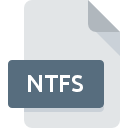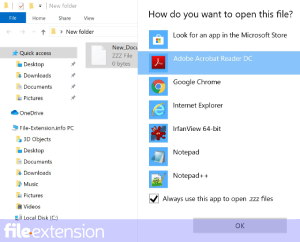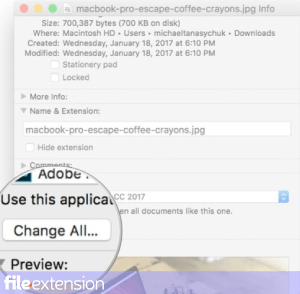
NTFS File Extension
NTFS Partition Format
-
Category
-
Popularity2.8 (9 votes)
What is NTFS file?
NTFS filename suffix is mostly used for NTFS Partition Format files. NTFS files are supported by software applications available for devices running Windows. NTFS file format, along with 323 other file formats, belongs to the System Files category. The software recommended for managing NTFS files is 7-Zip. Software named 7-Zip was created by Igor Pavlov. In order to find more detailed information on the software and NTFS files, check the developer’s official website.
Programs which support NTFS file extension
The following listing features NTFS-compatible programs. NTFS files can be encountered on all system platforms, including mobile, yet there is no guarantee each will properly support such files.
How to open file with NTFS extension?
Problems with accessing NTFS may be due to various reasons. On the bright side, the most encountered issues pertaining to NTFS Partition Format files aren’t complex. In most cases they can be addressed swiftly and effectively without assistance from a specialist. We have prepared a listing of which will help you resolve your problems with NTFS files.
Step 1. Download and install 7-Zip
 The main and most frequent cause precluding users form opening NTFS files is that no program that can handle NTFS files is installed on user’s system. The solution is straightforward, just download and install 7-Zip. The full list of programs grouped by operating systems can be found above. If you want to download 7-Zip installer in the most secured manner, we suggest you visit Igor Pavlov website and download from their official repositories.
The main and most frequent cause precluding users form opening NTFS files is that no program that can handle NTFS files is installed on user’s system. The solution is straightforward, just download and install 7-Zip. The full list of programs grouped by operating systems can be found above. If you want to download 7-Zip installer in the most secured manner, we suggest you visit Igor Pavlov website and download from their official repositories.
Step 2. Update 7-Zip to the latest version
 If the problems with opening NTFS files still occur even after installing 7-Zip, it is possible that you have an outdated version of the software. Check the developer’s website whether a newer version of 7-Zip is available. Software developers may implement support for more modern file formats in updated versions of their products. The reason that 7-Zip cannot handle files with NTFS may be that the software is outdated. The latest version of 7-Zip should support all file formats that where compatible with older versions of the software.
If the problems with opening NTFS files still occur even after installing 7-Zip, it is possible that you have an outdated version of the software. Check the developer’s website whether a newer version of 7-Zip is available. Software developers may implement support for more modern file formats in updated versions of their products. The reason that 7-Zip cannot handle files with NTFS may be that the software is outdated. The latest version of 7-Zip should support all file formats that where compatible with older versions of the software.
Step 3. Associate NTFS Partition Format files with 7-Zip
After installing 7-Zip (the most recent version) make sure that it is set as the default application to open NTFS files. The process of associating file formats with default application may differ in details depending on platform, but the basic procedure is very similar.

The procedure to change the default program in Windows
- Choose the entry from the file menu accessed by right-mouse clicking on the NTFS file
- Click and then select option
- The last step is to select option supply the directory path to the folder where 7-Zip is installed. Now all that is left is to confirm your choice by selecting Always use this app to open NTFS files and clicking .

The procedure to change the default program in Mac OS
- By clicking right mouse button on the selected NTFS file open the file menu and choose
- Open the section by clicking its name
- From the list choose the appropriate program and confirm by clicking .
- If you followed the previous steps a message should appear: This change will be applied to all files with NTFS extension. Next, click the button to finalize the process.
Step 4. Check the NTFS for errors
Should the problem still occur after following steps 1-3, check if the NTFS file is valid. Being unable to access the file can be related to various issues.

1. The NTFS may be infected with malware – make sure to scan it with an antivirus tool.
Should it happed that the NTFS is infected with a virus, this may be that cause that prevents you from accessing it. Scan the NTFS file as well as your computer for malware or viruses. NTFS file is infected with malware? Follow the steps suggested by your antivirus software.
2. Ensure the file with NTFS extension is complete and error-free
Did you receive the NTFS file in question from a different person? Ask him/her to send it one more time. The file might have been copied erroneously and the data lost integrity, which precludes from accessing the file. It could happen the the download process of file with NTFS extension was interrupted and the file data is defective. Download the file again from the same source.
3. Check if the user that you are logged as has administrative privileges.
Sometimes in order to access files user need to have administrative privileges. Log out of your current account and log in to an account with sufficient access privileges. Then open the NTFS Partition Format file.
4. Make sure that the system has sufficient resources to run 7-Zip
The operating systems may note enough free resources to run the application that support NTFS files. Close all running programs and try opening the NTFS file.
5. Verify that your operating system and drivers are up to date
Regularly updated system, drivers, and programs keep your computer secure. This may also prevent problems with NTFS Partition Format files. It is possible that one of the available system or driver updates may solve the problems with NTFS files affecting older versions of given software.
Conversion of a NTFS file
File Conversions from NTFS extension to a different format
File conversions from other format to NTFS file
Do you want to help?
If you have additional information about the NTFS file, we will be grateful if you share it with our users. To do this, use the form here and send us your information on NTFS file.

 Windows
Windows 
